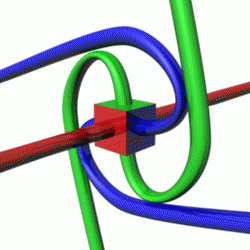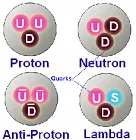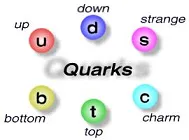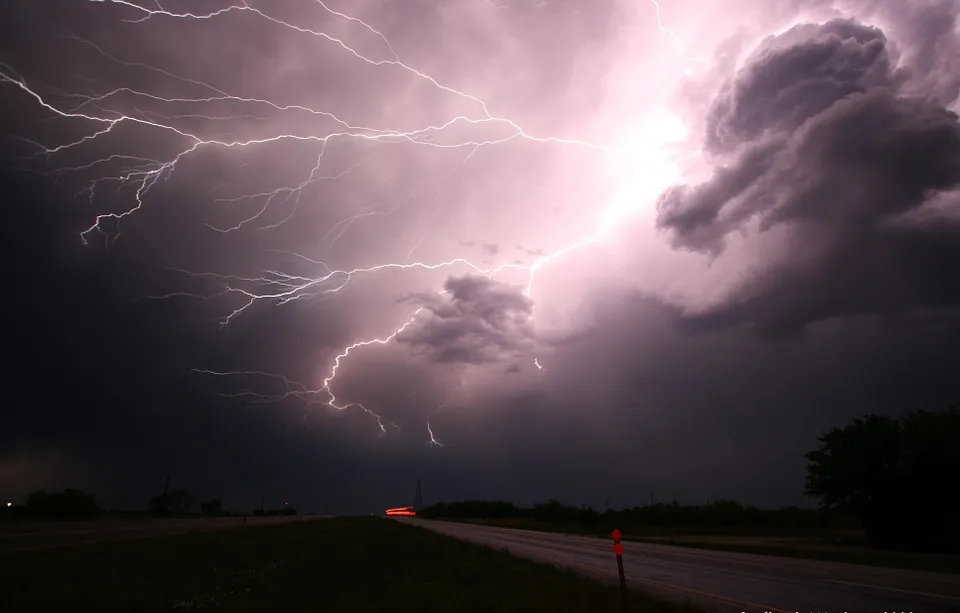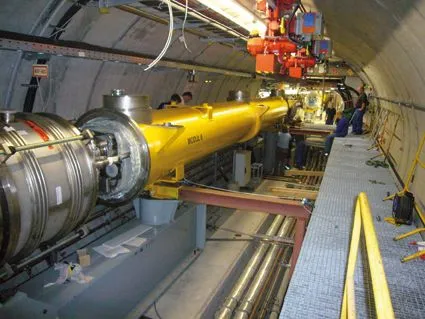Antimatter is not dark matter!
Dark Matter
The hypothesis that we have yet to observe as a dark matter, except for indirect roads that constitute approximately 84,5% of the Mass in the universe (its effects). It's not antimatter.
What is antimatter?
The term antimatter, according to the simplest expression; It has the same mass as the ordinary substance, but with different electrical loads, different lepton &baryon numbers and antiparticles with different quantum spins, the material is called antimatter.
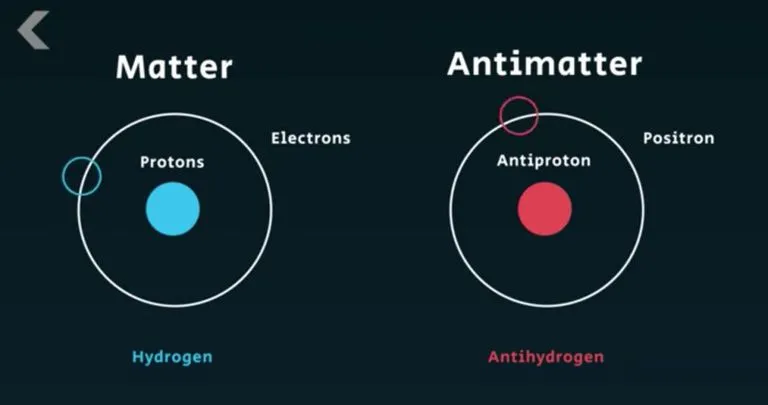
Information on some basic terms related to particle physics:
SPIN:Spin is a momentum that has a direction and value, almost all subatomic particles have. Except for the Higgs boson and some theoretical particles, all particles are spins.
Hadron: the famous "Big hadron collision " Particle accelerator in CERN, the hadrons, which are a combination of quarks and powerful nuclear force, are the moving protons, neutrons (barions) and many non-movable particles (mesons) is a family that covers
Baryon: The Hadron class particles consisting of 3 quarks. The famous protons and neutrons are a type of baryon.
Lepton: A particle family containing electron-like particles. Electrons, electron neutrinos, muons, muon neutrinos, taular and Tau neutrinos constitute the lepton family.
Quark: The quarks, the building stone of hadrons, are never directly observed or isolated. They're only found in the Hadron class particles called baryon and meson. Features such as electric charge, mass, color and rotation come from quarks. Quarks in larger particles formed by quarks determine what the particle will be.
Quarks are divided into 6 types among themselves. They are named Up, Down, Strange, Charm, Top, Bottom. Up and Down quarks are highly stable and low-mass particles found most in the universe. other quark types; It is formed in high-energy collisions such as cosmic beam collisions or particle accelerators, rapidly passing "particle decay" to low-mass up and Down quarks.
Okay, we've learned the terms about this particle physics, so we can continue the actual issue.
In the nucleus of the atom; Neutrons and protons are found. In the vicinity of the nucleus, electrons or electrons are located in various orbits according to their energy.
Antiprotons are negatively loaded in antimatter, whereas positrons-called antielectrons are positively loaded. Our universe is dominated by the substance that is normal for us. Even if a trace of antimatter is observed in the universe, it is very much less than the amount that should have emerged with the Big Bang. According to the Big Bang theories, antimatter and substance should have formed an equal amount.
So how did antimatter come out?
The term antimatter is first written by British physicist Sir Arthur Schuster in 1898 for Nature magazine. Schuster suggests that atoms may have contrasting traits, that they will push each other with normal substance, and even be star systems from anti-atoms. This hypothesis, despite its shortcomings, has established the basis of our understanding of today's antimatter.
The Modern antimatter theory was written by Paul Dirac in 1928. Dirac merged quantum mechanics with Einstein's special relativity, with the theory called Dirac's equation. The equation was also working with positive-loaded versions of both electrons and electrons (positrons). So the equation predicted positrons. Thus, the hypothesis that all particles could be a counter-loaded antiparticle, and that the antiparticles could come together and create antiatoms and antimatter.

The Dirac equation also gave Dirac a 31-year-old Nobel Prize, carrying the first title of the equation, envisioning something that was never observed before.
The formation of antimatter in nature
Did you know that your body was made of antimatter production? Like some of the small and enormous antimatter factories in the nature, our bodies are also spreading antiparticles.
Potassium-40: Antimatter can emerge everywhere, from particles accelerators to inconspicuous things, such as bananas and the human body.
In our case, the potassium-40 isotopes reveal a positrons every 75 minutes while passing beta decay. The same potassium-40 is found in the human body and the positron is revealed in the same way. But don't worry, these low quantities don't hurt you. 😃
- Storms: Storms produce more than rain, harsh winds and lightning. NASA's orbiting Fermi Gamma-ray telescope is observing the 500 pieces of TGF (terrestrial gamma-rays flash), the world's gamma ray flare. These are the gamma rays they produce as a result of the electrons on the peaks of strong storms colliding with other molecules in the atmosphere vertically, at speeds near the speed of light. These gamma rays are so powerful that they scatter electrons and positrons (Antielectron) into space, and these particles are found to be diameters of Fermi himself.
Artificial Antimatter Production
Antimatter is the rarest, most difficult and most expensive material in the world. Rare and precious materials, such as gold and diamonds, are only as valuable as the gravel stone alongside the antimatter. Due to its difficulty in production, the current value of 1 gram of antimatter corresponds to about 62.5 trillion dollars. The anti-matter is followed by California-252 elements with a gram of $ 27 million. If you are really looking for another material to compare with antimatter, some scientists are able to deliver the world to a few dark matter particles. 😃
Antiparticles are produced in particle accelerators at lower levels than the nanogram. At even lower levels, antiparticles emerge from the decay of various radioactive elements. The first antiparticle found, the positron, was discovered this way. Positrones that appear to be the result of decay nowadays are an important part of medicine.
As fields that are medically used;
PAS (Positron Annihilation Spectroscopy)
PET scans (Positron Emission Tomography)
Particle accelerators
Particle accelerators are machines that expose particles to incredible speeds through electromagnetic fields. It is used in many areas but most importantly it is high energy physics.
Such accelerators are multiplying the particles with very high densities and temperatures, while attempting to create the environment in the first moments of the Big Bang, revealing the fundamental particles that make up the substance.
Generating antimatter in accelerators
The large and powerful ones, such as the particle accelerators, the Tevatron in Fermilab, the RHIC in Brookhaven, and the LHC at CERN, can produce a considerable amount of antimatter (adequate for research).Each year, the Fermilab Tevatron accelerator produces 15 nanograms, the German DESY Accelerator 2 nanograms and CERN 1 nanogram quantities.
References List
- https://www.spektrum.de/lexikon/astronomie/quarks/380
- https://physics.tutorvista.com/modern-physics/quark.html
- https://www.nuclear-power.net/nuclear-power/reactor-physics/atomic-nuclear-physics/fundamental-particles/what-is-antimatter/
- https://www.zmescience.com/science/news-science/positron-atmosphere-source-04324/

